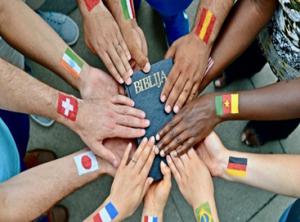How the Antioch Church Became the First Multiethnic Model — & Why It Still Matters
 What does a truly biblical, multiethnic, missional church look like? Surprisingly, the first and best example didn’t emerge from a summit, social seminar, conference, or urban campaign. It came straight out of the New Testament — in Antioch.
What does a truly biblical, multiethnic, missional church look like? Surprisingly, the first and best example didn’t emerge from a summit, social seminar, conference, or urban campaign. It came straight out of the New Testament — in Antioch.
Acts 13:1-3 paints a vivid picture of a church that was multiethnic, unified, Spirit-led, and passionate about the Great Commission. Antioch gives us a practical framework for building churches that reflect God’s multiethnic richness.
An Urban Church with Global Impact
Antioch was no quiet village. It was the third largest city in the Roman Empire — a bustling cosmopolitan hub. Persecution in Acts 8 scattered believers who then preached not just to Jews, but also to Greeks (Acts 11). The hand of the Lord was with them, and a multiethnic, multicultural church was born.
What Made Antioch So Different?
- It Was Apostolic and Missional.
Acts 13:3 shows Antioch sending Barnabas and Saul on the first missionary journey. This church didn’t just keep leaders — it multiplied and sent them. - It Was Multiethnic.
Acts 13:1 highlights leaders from various backgrounds:
• Barnabas was Jewish, from Cyprus, a Levite, generous, full of the Spirit.
• Simeon called Niger, meaning “black,” likely from Africa.
• Lucius from Cyrene (Libya).
• Manaen, connected to Herod’s household.
• Saul was Jewish with Roman citizenship. Apostle to the Gentiles. - It Was a Worshiping, Fasting, and Praying Church.
Acts 13:2-3 shows them fasting and praying before sending leaders. This wasn’t marketing — it was Spirit-driven mission. - It Practiced Team Leadership.
Antioch had prophets and teachers. No superstar culture, but shared leadership reflecting a shared calling.
Why This Still Matters
Antioch challenges modern churches on three levels:
• Christology: The Person and Work of Jesus
• Missiology: The Purpose of God and His People
• Ecclesiology: The function and form of the church
“Our Christology informs our Missiology, which in turn determines our Ecclesiology.” But if we get this wrong, it would be difficult to be a discipling church or a missional church. Antioch Church got this right!
Unity in Diversity
When a church worships, fasts, prays, and obeys Jesus, unity flows. Not because differences disappear, but because Christ becomes bigger than race, culture, or class.
What are the implications?
Jesus says:
• “By this all people will know that you are my disciples, if you have love for one another.” (John 13:35)
Paul says:
• “There is no partiality with God.” (Romans 2:11)
• “There is neither Jew nor Greek… for you are all one in Christ.” (Galatians 3:28)
In Antioch, love wasn’t theoretical — it broke social and ethnic barriers. That’s exactly what the Holy Spirit still wants to do in our churches.
A Model of Church Structure & Multiethnic Richness
Acts 13 shows a church with team ministry — prophets and teachers working together. Their variety in race, social class, and culture reflected the gospel’s reach beyond one group.
When a church worships, fasts, prays, and obeys Christ, the Head of the Church, you become unified. Their unity was rooted in mission, not mere programs.
The End Goal: Every Tribe
Revelation 5:9-10 gives a glimpse of heaven’s unified variety — people from “every tribe and tongue and people and nation.” This multiethnic richness isn’t just a social idea — it’s a gospel outcome. Antioch was a preview of heaven on earth.
Questions for Church Leaders & Consultants
- Is your church structured to multiply leaders and send them out?
- Are you building a leadership team that reflects the nations you want to reach?
- Is your unity rooted in worship, prayer, and mission, or just preferences?
Conclusion & Takeaway
As Christians, our identity isn’t first in our race, ethnicity, or class — it’s in Christ alone.
Don’t aim for variety alone. Aim to be a worshiping, fasting, praying, loving, missional church under Christ’s headship — and watch Him bring the nations to your doorstep.
Sources: Systematic Theology: An Introduction to Biblical Doctrine, Grand Rapids: Zondervan, 1994, by Dr. Wayne Grudem.
A Many Colored Kingdom: Multicultural Dynamics for Spiritual Formation (Grand Rapids, MI: Baker Academic, 2004), Brenda Salter McNeil, Harold Dean Trulear, and Sherwood G. Lingenfelter.


